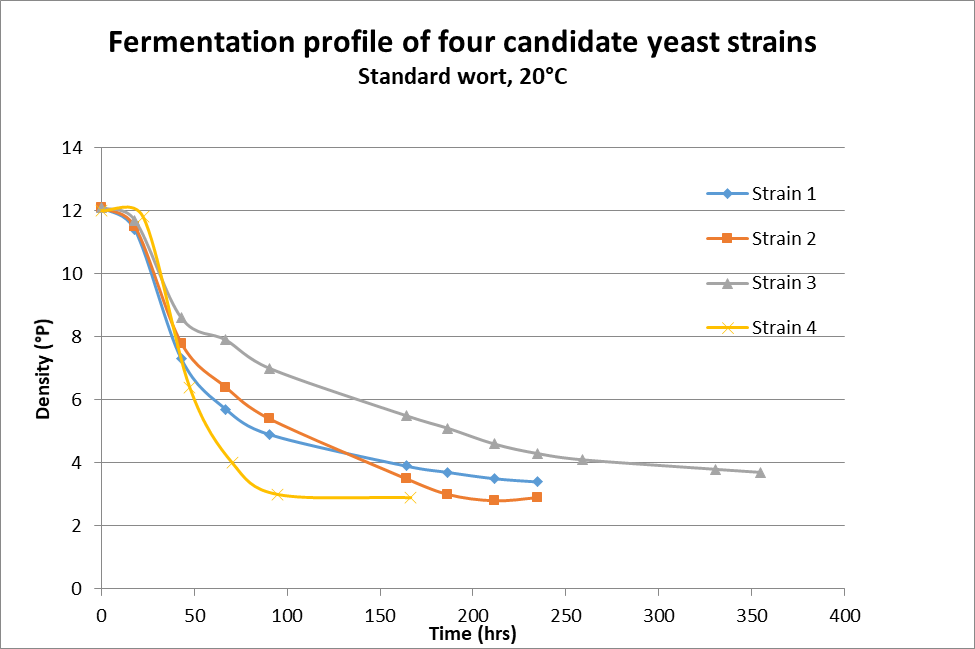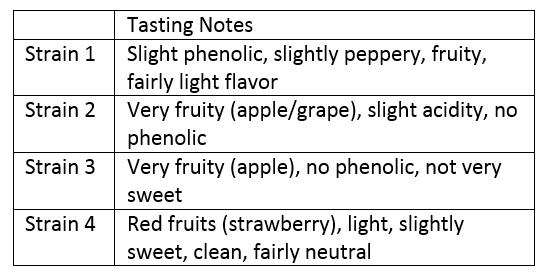Blog | Reading Time 2 minutes
New Strains Testing
In addition to fermenting sugar into alcohol and CO2, yeast plays an important role in flavor development. Each unique strain varies in their ability to metabolize different malt sugars and produce flavor compounds such as esters, phenols, sulfur compounds and fusel alcohols, to name a few. We are constantly search for new yeast strains to add to our portfolio of Lallemand Premium Brewing Yeast.

Candidate yeast strains are obtained from breweries, harvested from nature or procured from research strain collections. Genetic analysis is performed to assess whether the new strain is similar to existing strains in our collection (see image genetics). The strain is then propagated and fermented in our R&D lab using a standardized wort (see image fermentation tubes).

We then assess the fermentation kinetics and attenuation (see image fermentation profile) and flavor is assessed by our trained sensory panel (see images tasting panel plus tasting notes table). An example is shown here for four strains we recently evaluated in the lab. Strain 4 was identified as the best candidate due to fast fermentation, high attenuation and a unique strawberry aroma. Strain 1-3, while producing good beer with different flavor profiles, were eliminated from consideration due to slow fermentation and lower attenuation.

The next step is to send Strain 4 to our Process Improvement Lab (see image of bioreactors) to assess whether it can be produced and dried with high yields, viability, and purity. If successful, the strain is then sent for pilot-scale production (50kg dry yeast) before scaling up to full commercial production (>1000kg dry yeast) as the newest member of the Lallemand Premium Brewing Yeast portfolio.
Published Nov 5, 2019 | Updated Jul 21, 2023
Related articles
Need specific information?
Talk to an expert